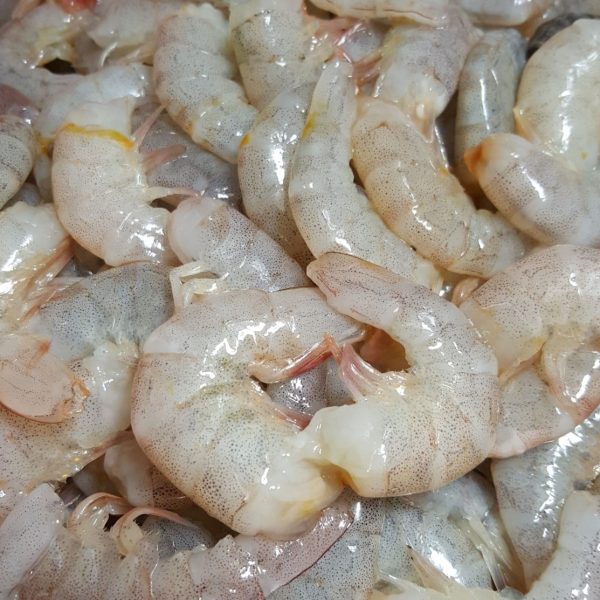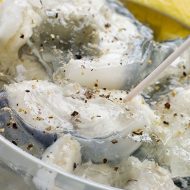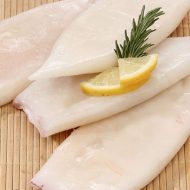In addition, because their shelf life decreases consumer risk and company expenditures, new frozen fish are substantially less expensive than fresh fish.
As a result, we offered premium frozen products that are less expensive and improve our customers’ entire experience while also giving them options in how they buy their seafood.
Customers prefer good quality and variety, which is exactly what we provide.
Processing New Frozen Fish
Whole, gutted fillets, steaks, and portion packs of frozen fish are available, all of which are made under strict quality control standards.
Individually examined and rated according to high-quality requirements, each fish is inspected and graded by a specialist. This ensures that customers receive the best products on the market.
Flash freezing is a sped-up process in which fish are frozen quickly after being caught.
Fish must be frozen in a matter of seconds, which necessitates shallow temperatures. In most cases, flash freezing allows fish to be caught, processed and frozen solid in a few hours.
This procedure results in a more consistent white meat colour, a better texture, and a better flavour and quality of fish meat.
Benefits Of New Frozen Fish
When you purchase frozen fish, you can rest assured that the fish was caught, cooked, and frozen most naturally and sustainably possible.
It decreases carbon emissions and has no toxic additives, such as chemical salts, commonly found in many foods.
Frozen fish and seafood are available all year, allowing families to enjoy fresh fish through the wintertime.
By freezing seafood as quickly as possible after the catch, it retains its natural flavour and nutritional content.
Freezing is an old technique that dates back thousands of years.
It is a natural method that does not require preservatives, allowing producers to deliver high-quality fish and seafood all year.
Our fishery products are special such that we freeze them at their peak of freshness, assuring optimal taste and texture.
After that, the fish is prepared to our stringent specifications and flash frozen to maintain its quality and freshness. We handle and treat frozen fish and seafood with the highest care.
Additionally, freezing fish and seafood enables you to use as much and as little as desired, minimizing waste. Additionally, frozen seafood can even be up to 25percent less expensive than fresh.
Why Buy New Frozen Fish From Us?
All year long, Frozen Fish Direct has the finest frozen fish and seafood.
We obtain fish and seafood from all over the world, taking into account local sustainability and the welfare of those who catch and care for them via our sustainability fishing projects.
Our committed team provides a diverse selection of world-class frozen fish and seafood.
Our packaging is functional, clear, and recyclable, and it tells you all you need to know about the product’s quality and source.
We have our processing plant where we prepare fish on-site to ensure the highest quality. Everything is delivered and kept in temperature-controlled freezers to ensure that every step of the process is regulated.
Indulge in superior consistency and quality at an affordable price, whether for business or family meals.
Every product is manufactured with the greatest quality ingredients and frozen using the most modern processes to ensure that it tastes just as good today as it was initially conceived.
New Frozen Fish Nutritional Facts
Our new frozen fish are free of cholesterol and carry omega 3 fatty acids, making it a wonderful way to provide your body with the best possible fuel for your health.
Fish has been demonstrated to be good for cardiac illness, cancer, diabetes and Alzheimer’s disease prevention.
Fat Content in a 3-ounce cooked Serving of Common Types of Fish and Shellfish:
High Fat (10 grams or more)
Herring, Mackerel, Sardines, Salmon (Atlantic, Coho, Sockeye and Chinook)
Medium Fat (5 to 10 grams)
Bluefish, Catfish, Rainbow trout, Swordfish
Low Fat (2 to 5 grams)
Tilapia, Halibut, Mussels, Ocean perch, Oysters, Pacific rockfish, Salmon (Chum, Pink)
Very Low Fat (less than 2 grams)
Crab, Clams, Cod, Flounder/Sole, Haddock, Hake, Lobster, Mahi-mahi, Pollock, Scallops, Shrimp, Tuna
FAQ’s
What makes frozen-at-sea fillets unique?
Although it requires more work and costs more, filleting at sea is a brilliant way to add value to fish.
We can create a high-quality product even after being frozen on the coast after 8 to 10 days because of our fish filleting techniques.
When my seafood arrives, how should I handle it?
All seafood should be kept frozen until you are ready to defrost and cook it. You should cook it the same day it is thawed.Keep the fish frozen or refrigerated at all times, and store it separately from other foods. Keep the leftovers refrigerated as soon as possible after dining.
What is the best way to defrost frozen fish?
Using cold water to thaw fish is a quick yet common method. For safety and flavour retention, the fish should be placed in a sealed container and submerged in water until defrosted.
Separate from all ready-to-eat meals and place in a container at the bottom of the fridge to thaw. Refrigerate until completely thawed.The simplest method is to melt frozen fish in the microwave. To catch drips, place the fish on a microwave-safe dish.Microwave for half the time indicated, then flip the fish so that the leanest pieces are in the centre. Fish that's been microwave defrosted must be cooked right away.
Why is it necessary to freeze?
Fish parasites are a concern in some wild fish species, such as salmon, herring, and cod, as well as other fish species like monkfish.Anisakis larvae, in addition to being unattractive, can induce human disease or allergies in certain people. Abdominal discomfort and nausea are common symptoms.The parasites are being eliminated by cooking. However, freezing is an alternate method for eradicating parasites that may be undiscovered in fish and fishery products that have not been cooked before eating.
Is frozen fish the same quality as fresh fish?
Frozen fish is frozen within three hours after being caught, which is greater than most fresh fish available in stores.They're caught, frozen, and delivered to the various establishments. It is then transported to your local store and delivered by a temperature-controlled vehicle.
With today's technology, frozen fish eliminates the concern about how fresh the fish you're eating is.






















